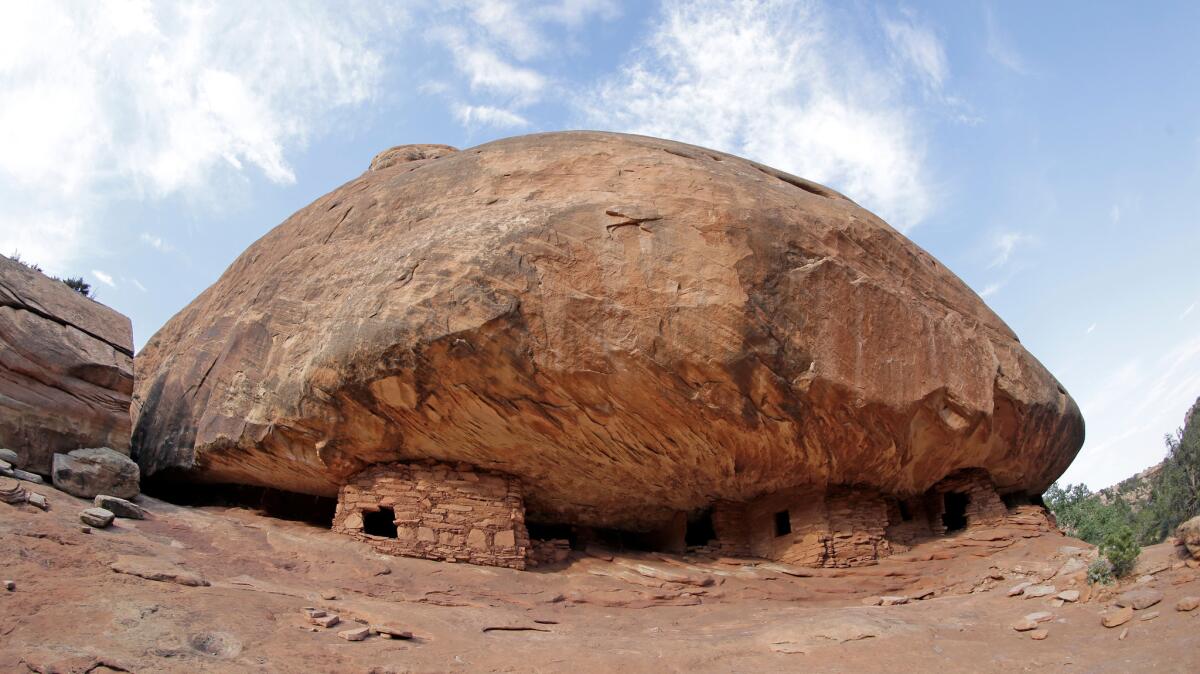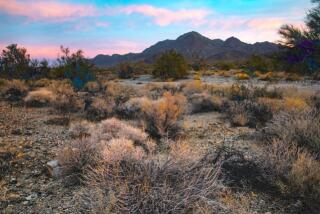Editorial: The Bears Ears National Monument would be the bee’s knees

- Share via
Since taking office nearly eight years ago, President Obama has used the Antiquities Act of 1906 to create or expand 26 National Monuments protecting hundreds of millions of acres of federal land from future development, mining and other terrain-scarring uses. The new or expanded monuments are sprinkled across the states and U.S. territories, from the depths of the Atlantic and Pacific oceans to the San Gabriel Mountains and Mojave Desert to a historical district in south Chicago. It’s an impressive effort to try to preserve landmarks and protect the natural beauty that defines so much of the nation.
The president should add one more: the proposed 1.9 million-acre Bears Ears National Monument, so named for two adjacent buttes in southeast Utah that, from a distance, look like a hatless Smokey Bear emerging over the horizon. The proposed monument encompasses steep canyons and sweeping vistas, Native American ruins and sacred grounds, and outdoor recreation spots, including hiking trails, campgrounds and popular rock-climbing sites. It consists of federal lands roughly south of Canyonlands National Park, east of the Glen Canyon Recreational Area, and north of the Navajo Nation, and would overlay the existing Natural Bridges National Monument and some designated national forest lands.
It’s a controversial proposal, but these days, what isn’t? State and federal elected officials from Utah have offered an alternative Public Lands Initiative that would designate 1.2 million acres of the Bears Ears region as a national conservation area. That not only would cover less of the rugged territory, but as a conservation area, it would mean fewer protections. And the Public Lands Initiative comes from the same mindset as the effort to persuade Congress to transfer federal lands — which belong to the entire nation — to state and local governments, which could then choose to develop them or exploit natural resources rather than maintain the land as a public treasure.
The Bears Ears National Monument was proposed by a coalition of the Hopi, Navajo, Ute Mountain Ute, Uintah and Ouray Ute, and Zuni tribes, who rightly argue that the region has historic significance to them and a natural beauty that deserves more protection, particularly against vandalism of sacred sites, rock art and burial grounds. The coalition also wants Obama to create a unique governance board of eight members, one from each tribe and each of the three federal agencies with jurisdiction over the land. While the tribes’ historical connection with the land is clear, it doesn’t make sense to put crucial management decisions in the hands of what are, in essence, special interests. The president should designate the monument and allow the tribes close consultation, but it should be managed with the public’s interest as the priority.
Follow the Opinion section on Twitter @latimesopinion or Facebook.
More to Read
A cure for the common opinion
Get thought-provoking perspectives with our weekly newsletter.
You may occasionally receive promotional content from the Los Angeles Times.










